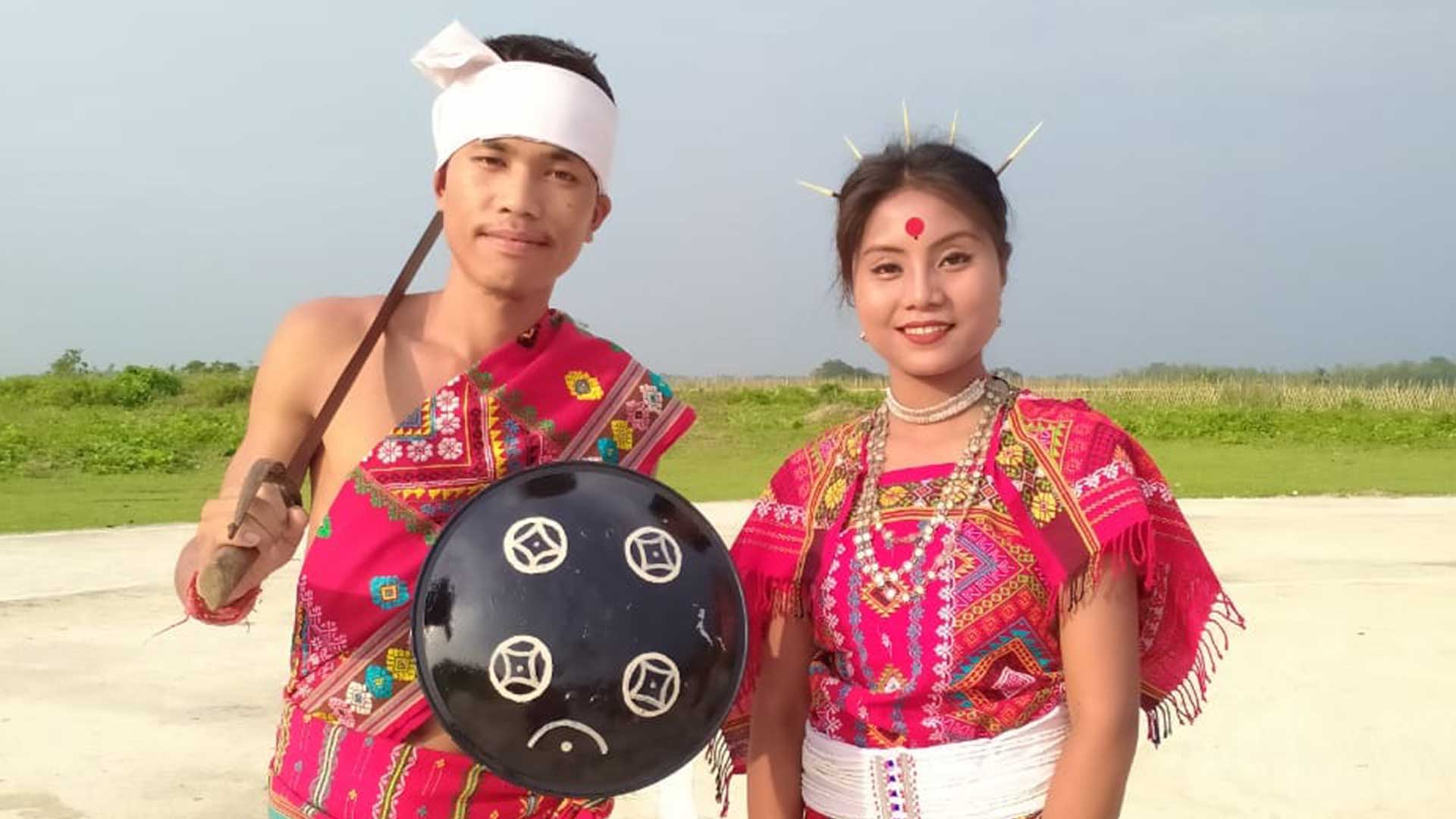By: AL-MARUF
The Koch people are an indigenous ethnic group residing in Assam, Meghalaya, and Bangladesh, known for their distinct language and cultural heritage. They belong to the Tibeto-Burmese family, which is the most populous ethnic group in India. Additionally, they are among the most ancient ethnic collectives. Similar to the Garos and Khasias, the Kochs are also trans-frontier communities.
Their hereditary lands are fragmented among multiple nations and various administrative divisions. This specific community is officially classified as a Scheduled Tribe in Meghalaya. The inhabitants of Janjati are committed to safeguarding their history and customs through government assistance and their endeavours.
They live in the upazilas of Jhenaigati, Nalitabari, and Srivardi in the Sherpur district of Bangladesh. The Koch and the Rajbansi are commonly considered to be part of the same community. Many individuals with the surnames Koch and Rajvanshi reside in the Barendra Pahari area, encompassing Gazipur, Mymensingh, and Tangail
Name the coach
As per the Yogini Tantra, the Kochs were referred to as Kubachs during this time. The Tabkat-i-Nasiri books mention the presence of Koch, Mech, and Tharu populations residing in Kamrup. However, specific individuals from the Koch and Mech communities in Cooch Behar identify themselves as Koch Rajvanshis, even though historical records reveal that the Kochs considered Cooch Behar their homeland, as documented in Fathia-i-Ibria.
Koch community
The Koch community can be categorised into eight distinct groupings. The villages that belong to this category are Wanang, Harigaia, Dasgaia, Satpari, Tinthekia, Chapra, Shankar, and Margan. Each team consists of multiple teams. One of these is referred to as Nikini.
Despite being a patriarchal society, in Koch society, the children of the family inherit their mother’s surname. Inheritance of property within the family is exclusively limited to male offspring. Marriage between individuals belonging to the same community, or svagotra, is prohibited. While both joint and single-family structures exist, the prevalence of single families surpasses that of joint families.
Following marriage, female Koch individuals permanently relocate to their husbands’ residences and adorn their skins and shells with vermilion while also wearing bangles on their hands. While monogamy is the prevailing practice in Koch society, polygamy is occasionally observed in exceptional situations.
History
Throughout the historical timeline of the Koch nation, the Koch family has exerted a substantial influence. Koch Hajo had a pair of daughters named Hira and Jira.
Koch Hajo belonged to the Bhuiyan community. Even in January, devotees persist in venerating this significant individual. Hira and Jira Mandal decided to marry Haria Mandal. Chandan and Madan are the names of Jeera’s offspring. Vishu, also known as World Lion, and Shishu, also known as Shishya Singh, are Hira’s offspring from her pregnancy.
Vishu, among them, exhibited bravery and possessed a wealth of knowledge. He is the progenitor of the Koch or Narayan dynasty in the Cooch Behar region. From the 13th century on, the name Koch became linked to several savage actions and gained considerable popularity.
During the 20th century, a significant segment of this community chose to identify themselves as Rajvanshis, leading to their adoption of the name Koch Rajvanshis.
Eating habits
Rice is the primary source of nourishment for the Kochs, and the majority of Kochs do not adhere to a vegetarian diet. Furthermore, they consume vegetables, beans, fish, eggs, and meat. They prefer pork as their favourite food, although they also enjoy eating rabbit, porcupine, and other comparable food items. They harbour a particular fondness for turtles and other non-fish creatures. They produce rice cakes for various events. Consuming alcoholic beverages is a customary practice among Kochs. However, upon their initiation by the Guru, they adhere to a lifestyle that refrains from consuming both meat and alcohol. Koch women don their customary attire, comprising of Lefen and Asham, whereas Koch males adorn themselves in traditional garments like dhoti, lungi, JAMA, and Genji. The user’s text is “(17)”. The user’s text is “[17]”.
Religion
The Kochs venerate the ancient deities Rishi and Patmi Yogamaya through their priests, Deusi and Azeng. In addition, they engage in religious ceremonies such as Durga Puja, Kali Puja, Saraswati Puja, and Lakshmi Puja. The Kochs believe they possess the roles of creator and sustainer of the entire cosmos. The Koch clan holds the goddess Kamakhya in high regard as one of their most significant deities.

